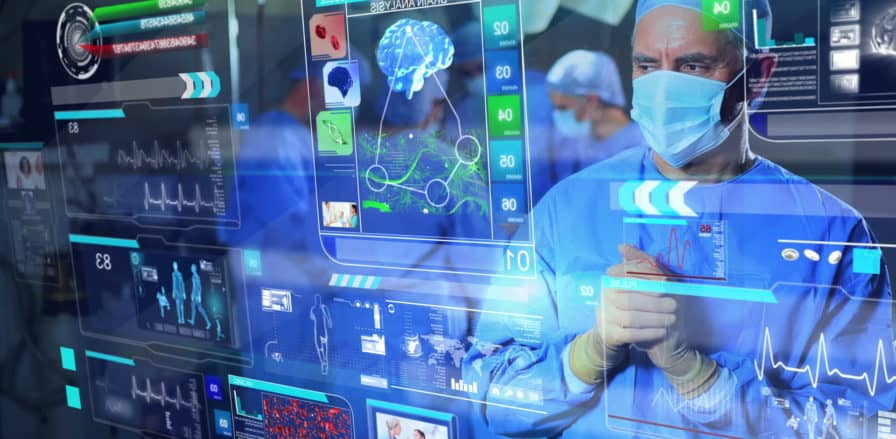By Marc Helberg
When the coronavirus swept across the nation last year, it pushed every business into embracing technologies out of necessity — perhaps the most pronounced coming from emerging technology in healthcare. Almost overnight, telehealth became a conventional means for administering safe and effective care. Telemedicine visitsand remote diagnostics provided access to physicians of nearly all medical specialties while allowing for easier execution of the administrative burdens (i.e., registration, medical histories, etc.).
While the pandemic may have accelerated the mass adoption of digital health solutions, many of these healthcare technology trends will likely become permanent. General consultations, for one, are perfectly suited for telemedicine services. Follow-up appointments and even patient triage can all be conducted over a video call, which can free up physicians to focus on patients with more severe conditions.
Speed and efficiency gains can also be found in natural language processing, where artificial intelligence and machine learning extracts health data from either spoken word or medical text — and retains much of the informational context. This allows physicians to diagnose, treat, and focus on patients while helping researchers and clinicians gain insights into treatments, procedures, and medical conditions by compiling data from disparate systems and records into a single source of truth.
Besides, healthcare providers must assimilate to the “buying” behaviors of today’s consumers. Much like cost, quality, and insurance coverage, both convenience- and experience-related factors often weigh heavily in a consumer’s decision about where to obtain care. Telemedicine, remote monitoring, and online self-service options can improve the competitiveness of healthcare facilities.
Challenges to Implementation in Healthcare Technology
Though AI in healthcare, ML advances, and telemedicinecan help advance healthcare, the path to implementation isn’t without challenges. Access to and user comfort with telemedicine services can get in the way of remote care. The same can be said for internet access, as patients in some rural and urban areas may not have reliable home broadband. And with libraries and community centers limited in their capacities, it just complicates accessibility to those in need.
Understanding the purpose of healthcare information technology can also be problematic. Misinformation involving everything from vaccines containing microchip trackers to the hackability of video chat technologies (telemedicine software must be HIPAA-compliant) can have devastating effects on acceptance and adoption of telemedicine from certain patient communities. After all, 37% of Americans aren’t willing to get the COVID-19 vaccine; getting them to log into virtual chats with physicians may be too tall an order.
Even with these and other challenges, it’s still important for healthcare providers to maximize available healthcare technologies to improve patient experience and care. These two steps are often the best places to start:
1. Meet patients where they are.
Patients are consumers, and their expectations are similar to any other business in the marketplace. Healthcare facilities must start factoring in the experiential elements of patient care such as superior customer service, high-tech interactions, and self-service tools. The simple fact that 70% of patients prefer virtual over in-person visits should be reason enough to provide telemedicine services to a specific community. Take the time, however, to understand patient access to and comfort with technologies to inform next steps. Providers may need to incorporate additional educational elements to improve adoption rates.
2. Integrate across data sources.
Consumer data has become increasingly important to meeting customer expectations. It’s no different with health data. Healthcare facilities must work across providers and electronic health record systems to fully integrate medical records and patient feedback. Otherwise, gathering new layers of insights into what the patient community expects in care becomes next to impossible. The goal here is to reimagine the provider-patient relationship for the future and improve the care and the experience for the patient — as well as those involved in their care.
The most impact from the patient experience perspective will likely come from accessibility to various degrees — access to patient care as well as the information and services necessary to meet each individual’s need. How can the information patients need and the access to care be automated? How can the time to access care be shortened? Answer these questions, and you’ll improve patient experience for the majority.
Marc Helberg is the managing vice president at the Philadelphia office of Pariveda Solutions, a consulting firm driven to create innovative, growth-oriented, and people-first solutions. Read more about the work Pariveda Solutions does here.
The Editorial Team at Healthcare Business Today is made up of skilled healthcare writers and experts, led by our managing editor, Daniel Casciato, who has over 25 years of experience in healthcare writing. Since 1998, we have produced compelling and informative content for numerous publications, establishing ourselves as a trusted resource for health and wellness information. We offer readers access to fresh health, medicine, science, and technology developments and the latest in patient news, emphasizing how these developments affect our lives.









